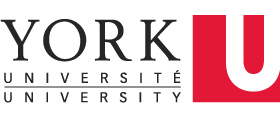Article written by: Jamie Lee Morin // Digital Projects and Metadata Assistant
Over the past two weeks, I’ve begun to learn how to digitize photographic prints, positives, and audio cassettes. Leading up to this, I’ve been steadily reviewing the Indigitization Toolkit - A Toolkit to for the Digitization of First Nations Knowledge, which is quite comprehensive at 192 pages. I found that reading the toolkit was helpful, useful and comforting, as it helped to orient myself concerning digitization before officially beginning the training. I also read over the workflow documents which specifically outlines policies developed by York University archivists and compared it to the Toolkit.
The files that I digitized are from the Mariposa Folk Foundation fonds (F0511), available to explore at the Clara Thomas Archives and Special Collections. The fonds, is made up of donations from the festival’s organizers. Beginning with a substantial donation in 2007, and with many smaller accruals almost annually, the archives is still very much in the process of being arranged and described and being made available to researchers. In 2010 the archives launched a digitization project to celebrate the festival’s 50th anniversary, which resulted in a number of photographic images and sound recordings being digitized for an online exhibit, focused on the first twenty years of the festival.
Preparing to launch
Following the workflow document and Anna’s instructions, I first had to launch the workspace, using SilverFast, equipping myself with white gloves, and determining which images were already digitized in order to avoid duplication of work. I was also assigned ASC numbers, which will correspond to items that I will be digitizing as a way of locating them in YUDL / Islandora. Tracking which numbers are used are done through another tracking document.
There are a couple of ways to determine which images are the ultimate candidate to be, or not to be, digitized. Things to look out for include the item being already associated with an ASC number, and unknown copyright. Reasons to digitize include not being on Islandora yet, has a known copyright status, or may be considered a priority for preservative digitization due to its composition.
Generally, when it comes to digitizing images, the role of the digitizer is to have minimal to no interference with the presentation of the virtual image. For the most part, intervention is usually not merited unless there is too much shadowing (which takes away detail in the image itself) or if there is external decoloration that has nothing to do with the setting in which the image was captured (for instance, an photograph turning yellow or fading due to age and improper storage).
Process for digitization
I decided to learn two different types of digitization: images (photographic prints and colour positives) and audio (audio cassette).
For images, following protocol I launched an Epson scanner and SilverFast, and decided which images merited digitization. Wearing white fabric gloves I would then place the image on the scanner (for the colour positives, a tray helped with aligning the image to a 90 degree angle). For colour positives, an additional challenge was ensuring that I was scanning the right side of the image. The easiest way to determine this was to look for lettering in the image - such as a stage number or a logo. I always ran a pre-scan before to ensure that I would be scanning the right area, and that the colours were not too dark nor too light. In this case, the images that I had I was also able to upload almost immediately onto York University Digital Libraries.
For audio, the process is to launch the audio recorder and Adobe Audition. Using Adobe Audition, you can play and record audio simultaneously. Part of pre-digitization, besides selecting certain tapes, is to assess the condition of the tape in question. Things to look out for in terms of quality is if the tape is taut or if it appears to be loose.
We digitized the recording using Adobe Audition, and took notes on basics of what was happening in the recording using Notepad. First we checked the condition of the tape - whether it was sagging or loose (in our case, it was not). We then entered the audio cassette into the digitization machine, and began recording, followed by beginning to play the tape. Everytime a song ended, I would get up and record information as it came, such as basic notes on the speaker introducing the next song, the next song title if given. I would also do this while inspecting the work station and make sure that everything was operating as it should.
Next week Anna and I will be beginning to contact some of the individuals who have performed (and are recorded at the Festival), and the digitization process will continue happening.
